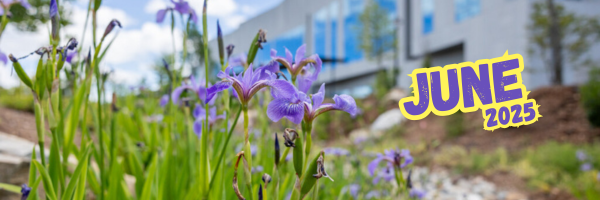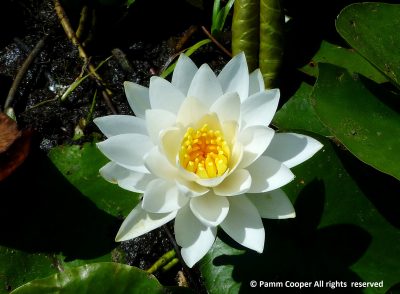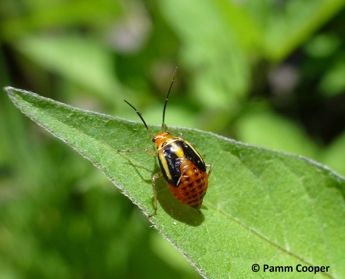
In June as many as a dozen species may burst their buds on a single day. No man can heed all of these anniversaries; no man can ignore all of them.
— Aldo Leopold, "Prairie Birthday"
Move Your Houseplants Outside!

With summer sunshine finally arriving in Connecticut, it’s a great time to give your indoor houseplants a seasonal boost. The increased sunlight, warmer temperatures, and higher humidity can help your plants thrive—but only if they’re eased into the change. Like people, houseplants need time to adjust to new conditions in order to succeed in them.
To help them transition from indoors to outdoors, start by placing them in shaded areas. If desired, you can gradually increase their sun exposure over about two weeks. This slow adjustment helps prevent sunscald, a common issue when plants are suddenly exposed to much stronger light, similar to a sunburn. Keep in mind that even the brightest indoor spots receive far less light and radiation than full sun outdoors. Therefore, many houseplants do best in full shade or indirect light all summer, while some can tolerate part shade once properly acclimated.
To keep your plants happy and hydrated, place them somewhere visible so you’re reminded to check on them regularly. With more sunlight and warmth, they’ll likely be pushing out new growth, and will need water more often. Check the soil daily during hot, sunny weather to prevent drying out and ensure a smooth adjustment to their new environment.
Spring Flowering Shrubs Need Maintenance!
Pruning spring flowering shrubs is an essential aspect of maintaining a healthy and vibrant garden. Early spring is typically the ideal time for pruning these shrubs, as it allows for healthy growth and better blooms during the upcoming season.
When pruning these shrubs, focus on removing any dead, damaged, or diseased wood, as well as any crossing branches that may cause damage or hinder growth. It's important to keep in mind that each shrub has its own unique pruning requirements based on its growth habits and flowering times. For example, early-flowering shrubs should be pruned after their blooms have faded, while late-flowering shrubs should be pruned in late winter or early spring before new growth begins.
Native Plant: White Water Lily (Nymphaea odorata)

This native water lily occurs in still water that is 5-6 feet deep. The fragrant flowers appear in June and float between the large, circular leaves.
Flowers are open for three days, displaying a cup-shape the first day filled with sugary liquid that attracts the beetles and bees that pollinate them, and on the second and third day pollen is available.
Seeds are dispersed by water fowl such as wood ducks and by water currents. Sometimes a pink form of the flower occurs.
Learn More About White Water Lily
The Connecticut Native Perennial, Tree, & Shrub Availability List
Word from the WiSE
Nutrients Plant Krave: NPK
You tested your soil, you receive your soil test report, and now you need to decide on a fertilizer. But in the fertilizer aisle, all you see are triads of numbers: 20-20-20? 0-1-2? 10-5-35?? How do you know which to select? First, it’s important to know that these numbers correspond to the percent by weight of nitrogen to phosphorus to potassium – in that order – in the fertilizer blend. Second, be sure to check the back of the bag – Other nutrients such as calcium, magnesium, and boron, if they are present in the blend, will be listed on the back. The ingredients list will give you a sense of the form of that nutrient – For instance, polymer coated urea is a form of N that will be released slowly over time; Whereas something like potassium nitrate will be highly water-soluble. Most bags will also indicate the effect of the product on the soil pH: It may say something like “potential acidity” or “potentially basic”. For more information about soil testing, be sure to check out our website below! Also, to help calculate what fertilizer you need based on your soil test report, check out this handy calculator tool from Clemson!
By Abigayle Ward, Soil Science Graduate Student
In the Garden & Pest Alerts
In the Garden: Fourlined Plant Bug

Fourlined plant bugs (Poecilocapus lineatus) are making their presence known in perennial and herb gardens. Damage from both the small nymphs and adults looks the same: black sunken areas on leaves and sometimes stems.
While they only have one generation per year, nymphs emerge over a period of weeks in the late spring/early summer. They should be out of the garden by the end of July.
They can cause considerable cosmetic damage, but they generally do not kill the plants. Adults are neon green with 4 black stripes down the back.
UConn Pest Alerts
During the growing season, UConn Extension publishes a regular pest alert for both vegetable and fruit producers. Additionally, the New England Vegetable Management Guide offers a lot of information about specific vegetable crops.
While the target audience for these publications is usually commercial growers, home gardeners can learn a lot from these materials including identification and management of common pests in your veggie gardens!
If you ever need confirmation on an ID or have additional questions about what you read in these reports, please do not hesitate to reach out to us at the Home & Garden Education Center! We're happy to help your gardens thrive.
Knowledge to Grow On

Upcoming Events and Things to Do
- It's Strawberry season! Pick Your Own throughout the month and into July!
- Strawberry season means Strawberry Festivals! Find one close to you in towns like Mystic, South Windsor, Orange, and more!
- The Sky's the Limit Hiking Challenge and The CT Wine Trail are opportunities to see more of CT and get rewards for completing challenges.
- It's the season for Garden Tours! Check with your local garden club for schedules, or participate in CT Historic Gardens Day at the Florence Griswold Museum, June 22
Educational Opportunities & Workshops
- 60 Years / 60 Trees: Flowering Trees- June 10th, Stamford CT & Virtual
- Designing for Habitat: From Back Yards to Byways with C. Colston Burrell, June 26, Middletown CT & Virtual
- UConn Interscholastic Equestrian Association (IEA) Team Tryouts - June 25, Storrs CT
- Attend a UConn Master Gardener Course! (Various dates and various locations)
- CT State Parks have multiple events happening this month!
Connecticut is rich in agricultural history, with many operational farms that have lots to offer local markets!
Supporting local CT Agriculture is a way that gardeners can supplement the fresh foods they grow in their garden, with seasonal offerings from year round operations.
Consider attending a local farmers market, joining Community Supported Agriculture (CSA's), or even stopping by your nearest farm stand to see what they have to offer!
June Gardening Tips
- Heavy rains encourage slug problems. Check for slugs during rainy periods and hand pick the pests.
- Lightly cultivate soil after a heavy rain to avoid compaction. A layer of mulch reduces the soil crusting and compaction caused by raindrops.
- Be aware that container plants will need more water during hot and windy weather.
- There is still time to sow seeds of beans, beets, carrots, cucumbers, and summer squash. Plant seeds of bush beans every three weeks for a continuous harvest.
- Sow seeds of fast-growing annuals like marigolds, zinnias, and cosmos directly in the garden.
- Keep on top of weeds during the early summer when they are small and easy to pull. If you keep your garden plants well-watered and fertilized, they will quickly fill in bare spaces and give weeds fewer places to grow.
- Mow lawns often enough to remove no more than one-third the total height per mowing. There is no need to remove clippings unless excessive or diseased.
- This is a good time to take cuttings of trees and shrubs, such as chokeberry, butterfly bush, spirea, serviceberry, hydrangea, dogwood, and magnolia, to root for new plantings.
- When deadheading rhododendrons, avoid breaking off the leaf buds which are just below flowers. Carefully twist off spent blooms.
- Water at ground level for best results. If you must overhead water do so early enough in the day to allow the foliage to dry before nightfall to minimize diseases.
- Mosquitoes breed in standing water. To discourage them, change the water in bird baths and outdoor pet dishes every few days.
This Month’s Newsletter Contributors:
Heather Zidack, Pamm Cooper, Marie Woodward, Abigayle Ward, Holly McNamara

